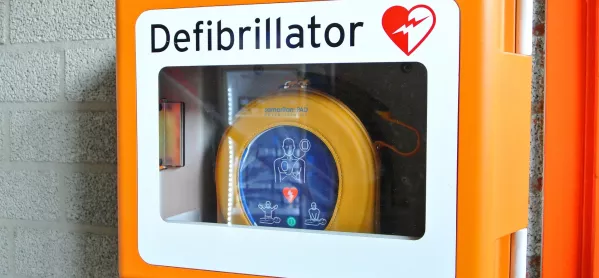The whole of Europe became instantly aware of the risk of cardiac arrest recently when Danish footballer Christian Eriksen collapsed on the pitch during Euro 2020, suffering cardiac arrest, and having his life quite literally saved live on camera.
In the following moments, we also became aware of the almost miraculous impact of effective CPR and the deployment of an AED (automated external defibrillator).
Sadly, cardiac arrest does not end so favourably for too many individuals and families. Every week in the UK, 12 young people aged 14 to 35 die of cardiac arrest, 80 per cent of whom had no previous signs or symptoms. Fewer than 10 per cent of people who suffer an out-of-hospital cardiac arrest survive in the UK.
But there is hope. The chances of surviving cardiac arrest go from about 6 per cent to about 74 per cent if effective CPR begins almost immediately and then an AED is deployed within the first 3 to 5 minutes.
The importance of CPR and defibrillators in schools to tackle cardiac arrest
So what role can schools play?
1. Train staff and students
We have done this in our schools on collapsed-timetable days as part of the PSHE/wider curriculum. It is much easier to get a trainer to come in and teach CPR to each year group on a carousel in one day than to get them in many times over several weeks.
2. Embrace your volunteers
We began by asking for staff volunteers who wished to be trained in using the defibrillator - and the take-up was huge. Ideally, all staff would be trained, but volunteers are a great starting point.
3. Reassure staff about the reality of training
Let staff know that the training is never as daunting as they might expect. I was really nervous about the defib training: the thought of giving someone an electric shock to restart or resettle their heartbeat sounds terrifying and well beyond my capabilities.
The truth is you cannot “wrongly” deploy the defib as it is automated and does all the analysis and deploys the shock if needed. You simply follow the instructions (and most modern versions even talk the instructions out loud to you).
It’s a great refresher if you have had basic first aid or CPR training in the past. It’s important to remember that things have changed over the years - the recommended number of breaths to number of chest compressions, for example - so it is definitely worth refreshing and bringing yourself up-to-date with the latest thinking.
4. Have a defibrillator on site
Preferably, make sure your defib is set up externally on your building as a PAD (public access defibrillator) so that it can save lives in the community at any hour of day or night and not only bring peace of mind to your staff and students during school opening hours.
It will need to be connected to the school’s electricity supply, so needs to be on the outside of the building where it can be easily wired into the building. Having a portable AED in the building would probably be the next best thing. Any defib is far better than no defib.
5. Look for help with funding
A defib costs between £700 and £1,500 and to set it up externally as a PAD will cost an additional £400 to £600. Some local charities fund defibs and will also come in and teach first aid and CPR for free.
Another solution is to make it a school charity fundraising effort. Despite the pandemic restricting fundraising activities at Newton Abbott College, we look set to raise enough to fund nearly 25 defibs for schools and sports clubs.
Paul Cornish is principal of Newton Abbot College in Devon and Dan Osborne is a PE teacher and trustee of Jay’s Aim: Helping Young Hearts Charity




